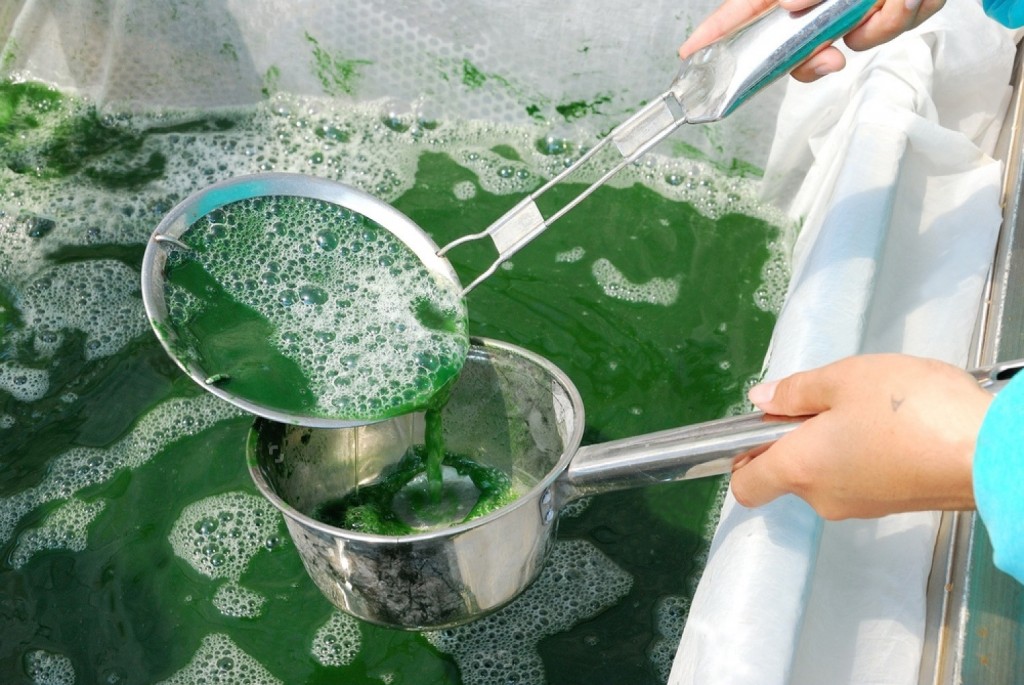Spirulina & LED lighting
What is Spirulina ?
Spirulina was discovered in Europe at the time of the conquest of America. Once consumed by the Mesoamericans, we also know that it is used by the Chadian people since the ninth century in their daily diet.
Spirulina is a cyanobacterium marketed mostly in dietary supplement because of its richness in minerals and vitamins, it is produced from various species of the genus Arthrospira of the cyanobacterial phylum.
Spirulina « the super food »
This nickname comes from its significant nutritional intake. We know it has high values in vegetable protein, vitamins, minerals, trace elements, fatty acids, antioxidants.
What makes it a popular product today is the cult of the gym. Indeed spirulina, known by the public, is featured for its protein content of about 70% of its dry weight. At equal weight it contains twice as much protein as in soybean and up to three times the amount in meat or fish. In addition it also contains amino acids.
Both products are the elements being the most coveted by sports amateurs, dietary supplement manufacturers are choosing to create more food supplements containing the « miracle » alga.
It is sold in tablet, powder and capsules, promising consumers a concentrated source of protein and an abundance of amino acids, it can facilitate the development and recovery after exercise and even detoxify.
It has the highest rate of β-carotene concentration, as its β-carotene content is ten to fifteen times greater than it is in the carrot. It is a pigment which promotes the synthesis of melanin. So spirulina may also help improve skin tone and provides a better tan.

Spiruline in powder and tablets.
Risks related to homemade cultivation
To grow the alga can be dangerous for consumers. Indeed as a form of cyanobacteria, a batch of spirulina may be contaminated with other forms of harmful cyanobacteria.
Growing spirulina with led lightings
Using LEDs as light source, the producer ensures to reduce stress upon its cultures and to optimize the development. Cultivation using LED lightings in a controlled environment (pond or bioreactor greenhouse) then helps to minimize the danger of contamination and to maintain a monoculture.
Using LED as light source, the producer ensures reduce stress upon its cultures and to optimize the development. He must, however, keep an eye on the temperature of its waters (between 30 and 37 ° C / 86 ° F and 99 approximately ) and on the quality thereof.

Spirulina harvesting in controlled pool
The « miraculous » alga market
Today there are more than 150 farms in France that produce spirulina, they produce more than 100 tons of dry spirulina a year. In 2013, 1 out of 50 French regularly consumed spirulina, spirulina becoming more and more popular, it will only increase its population of followers in the coming years, with more and more applications to vocational training. This market is in full expansion and will not stop growing anytime soon.

The Horticoled team can accompany you in all your project culture. From simple greenhouse cultivation, to automated multi-layer cultivation according to your farming goals and budgets.




